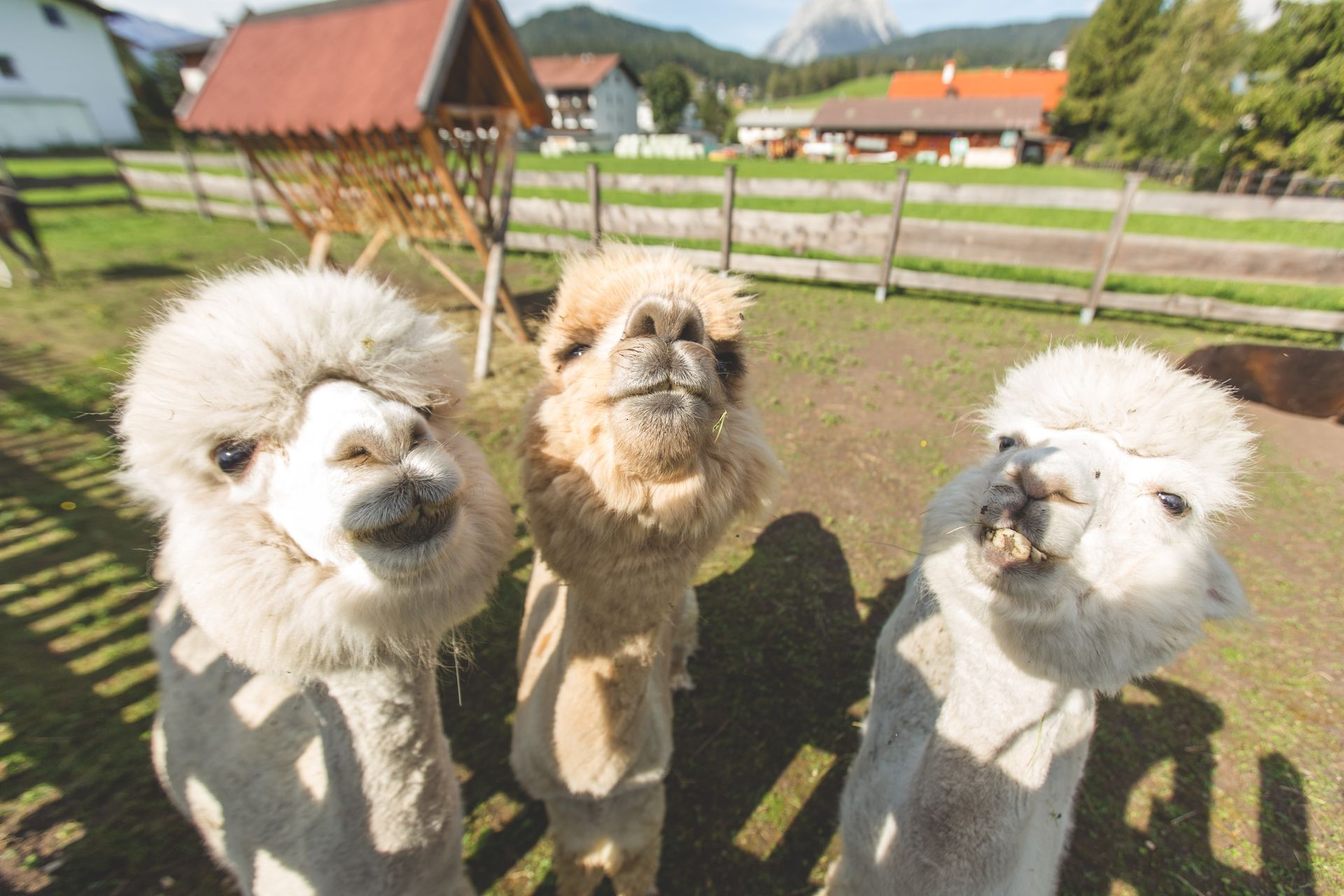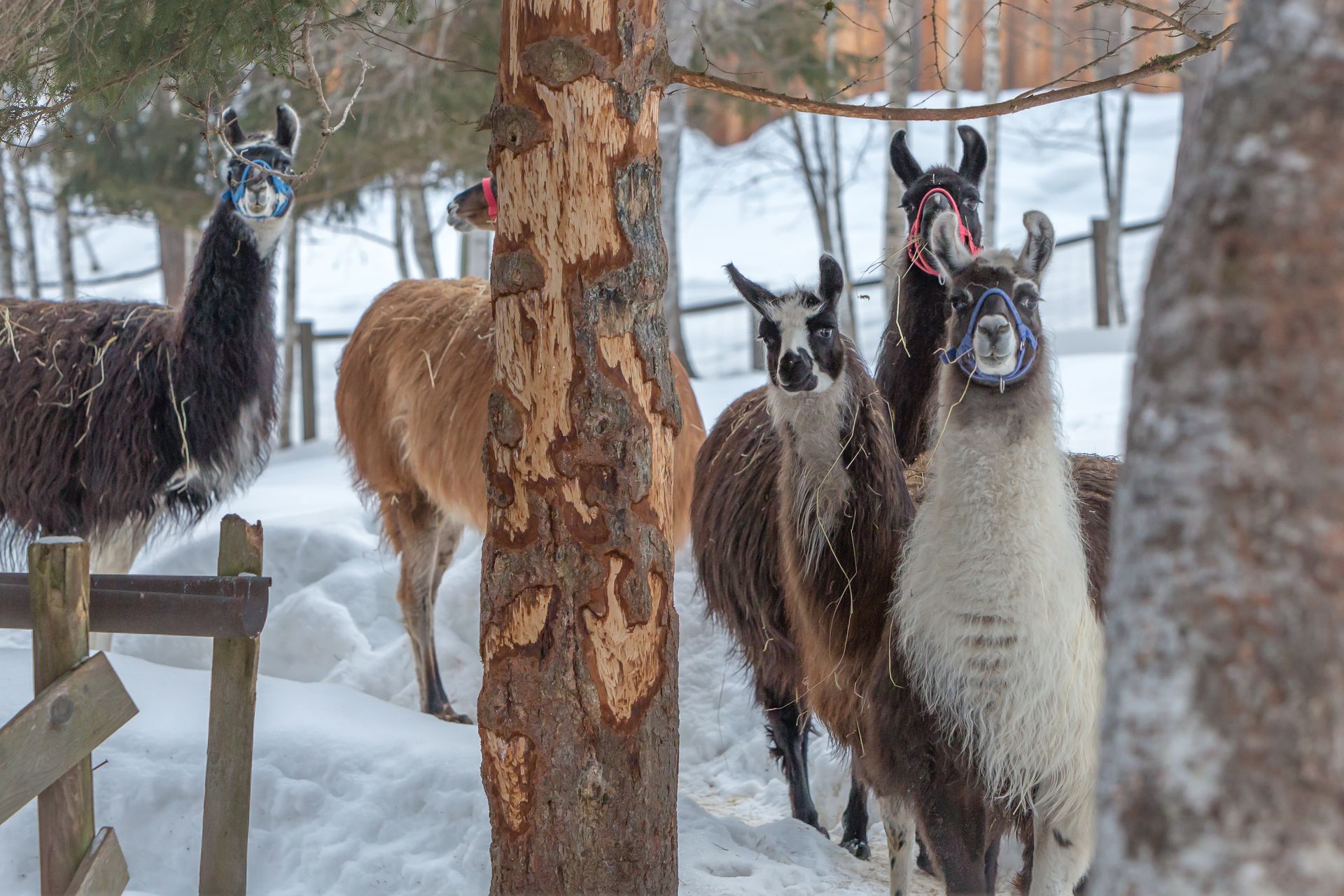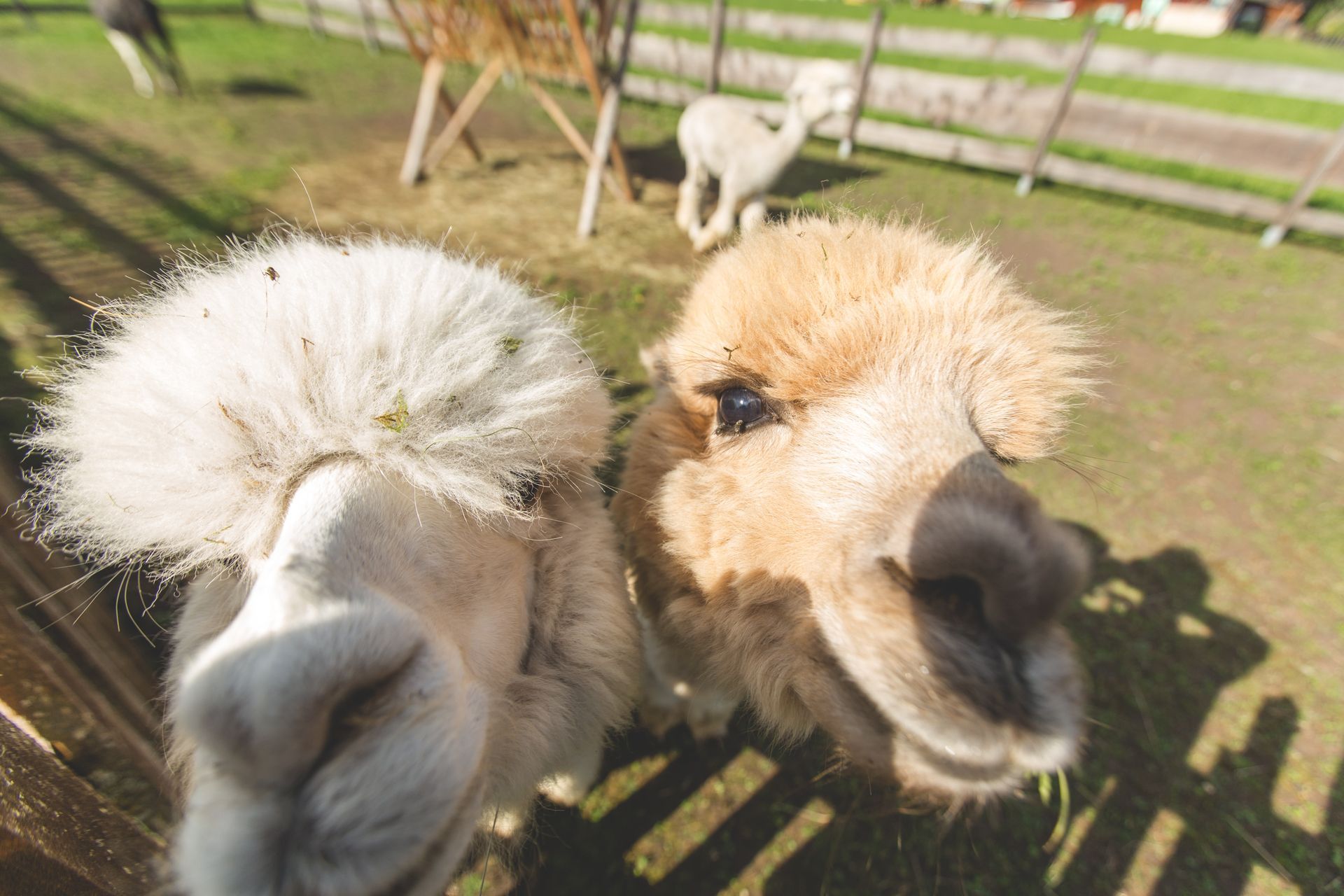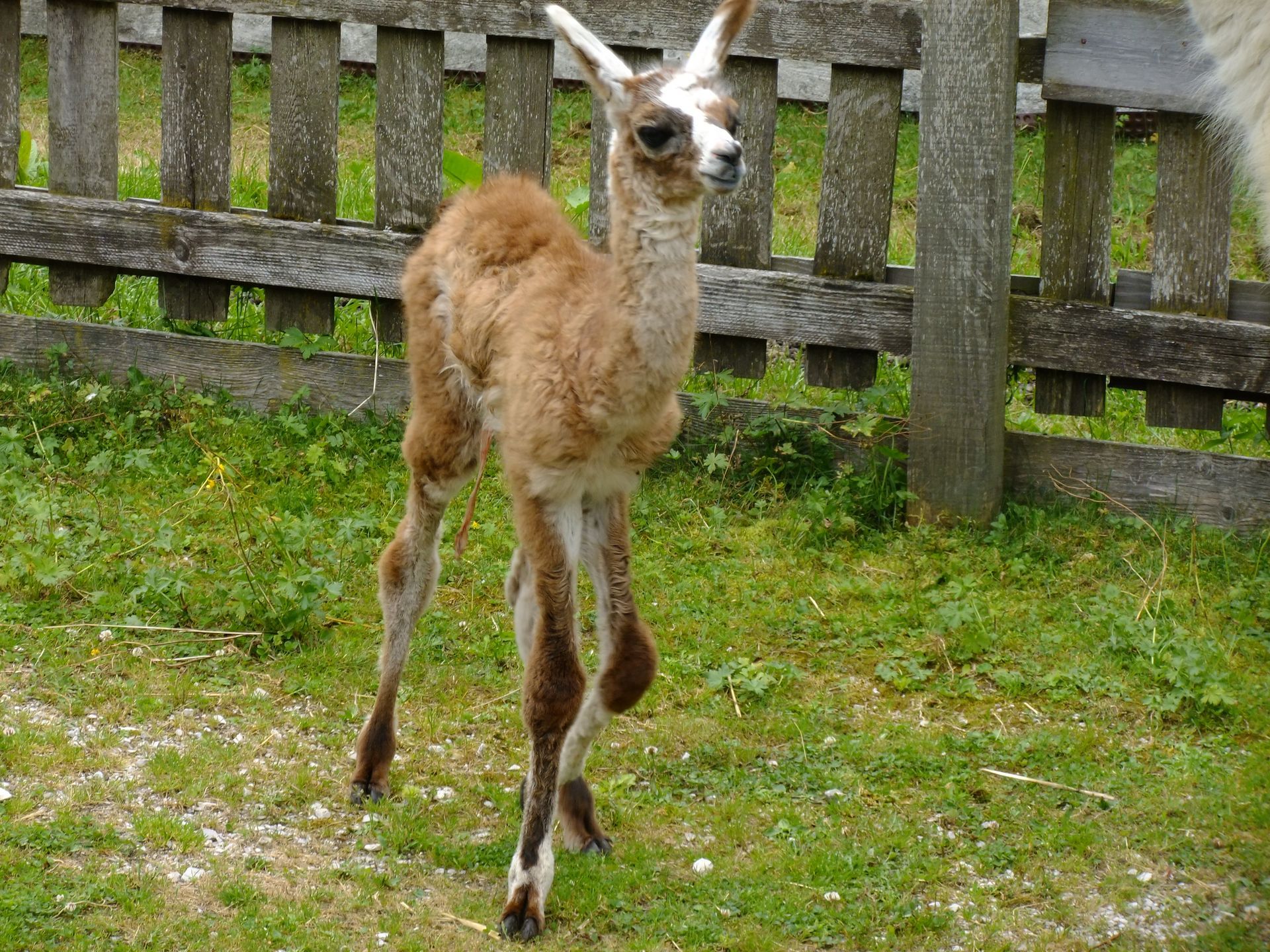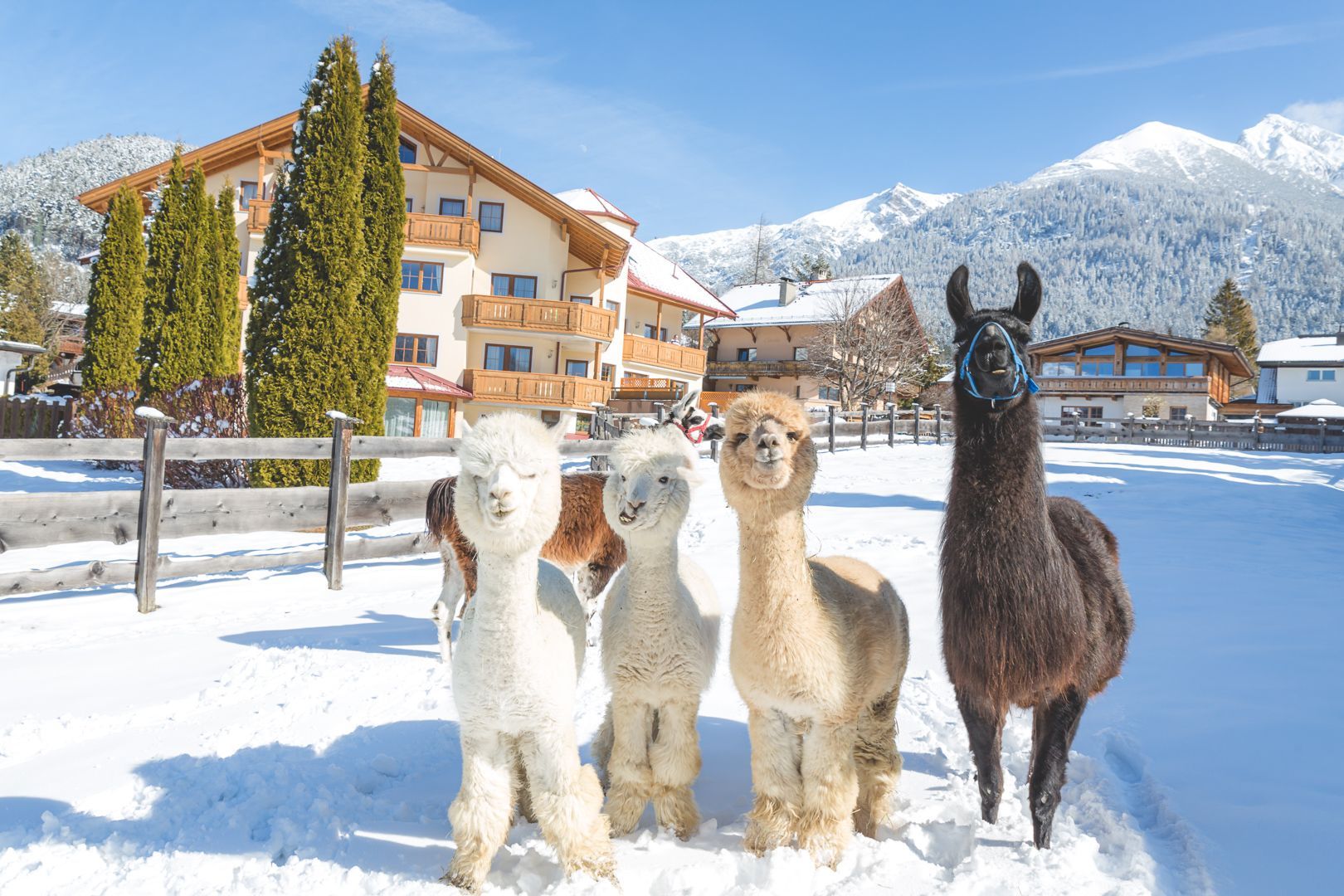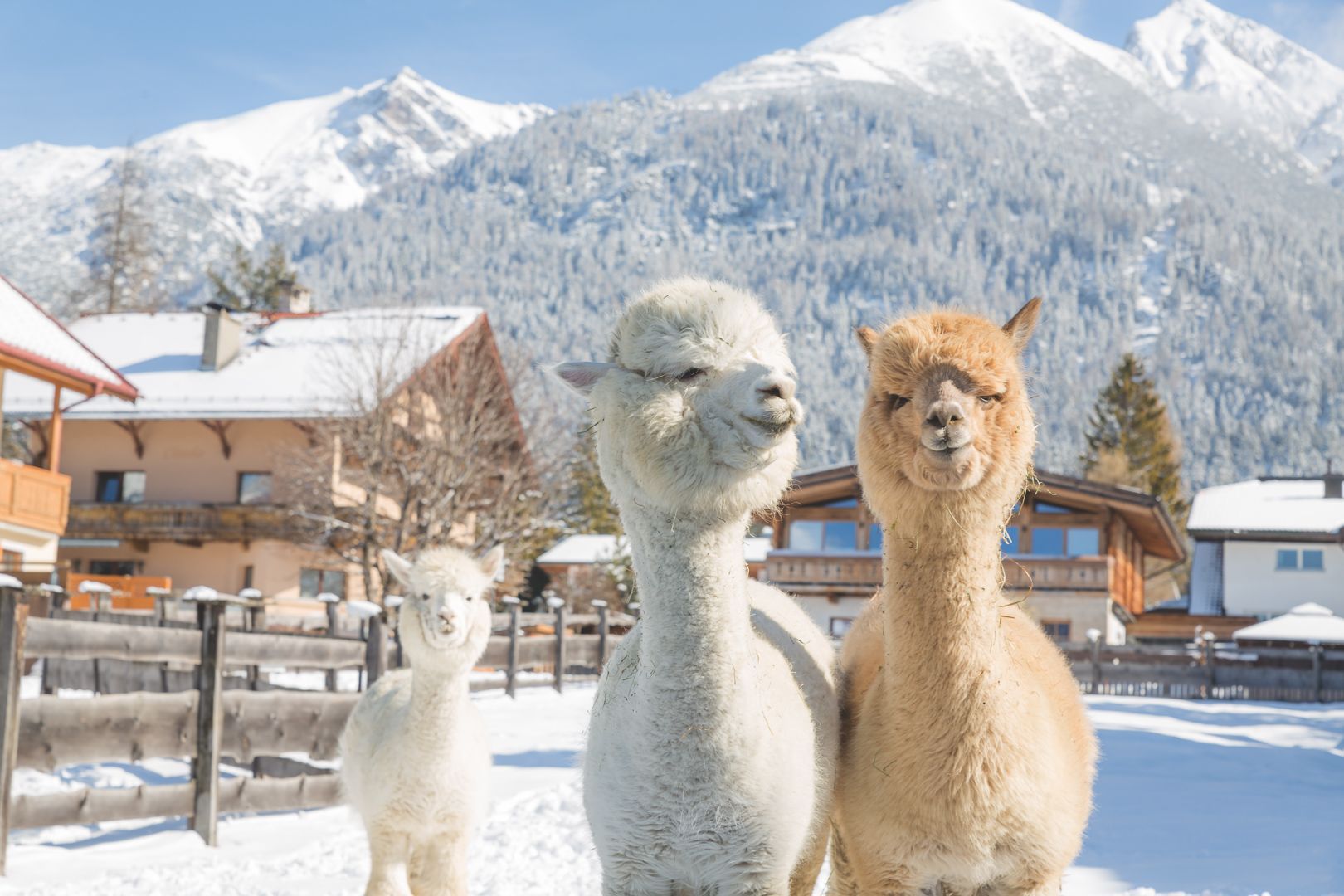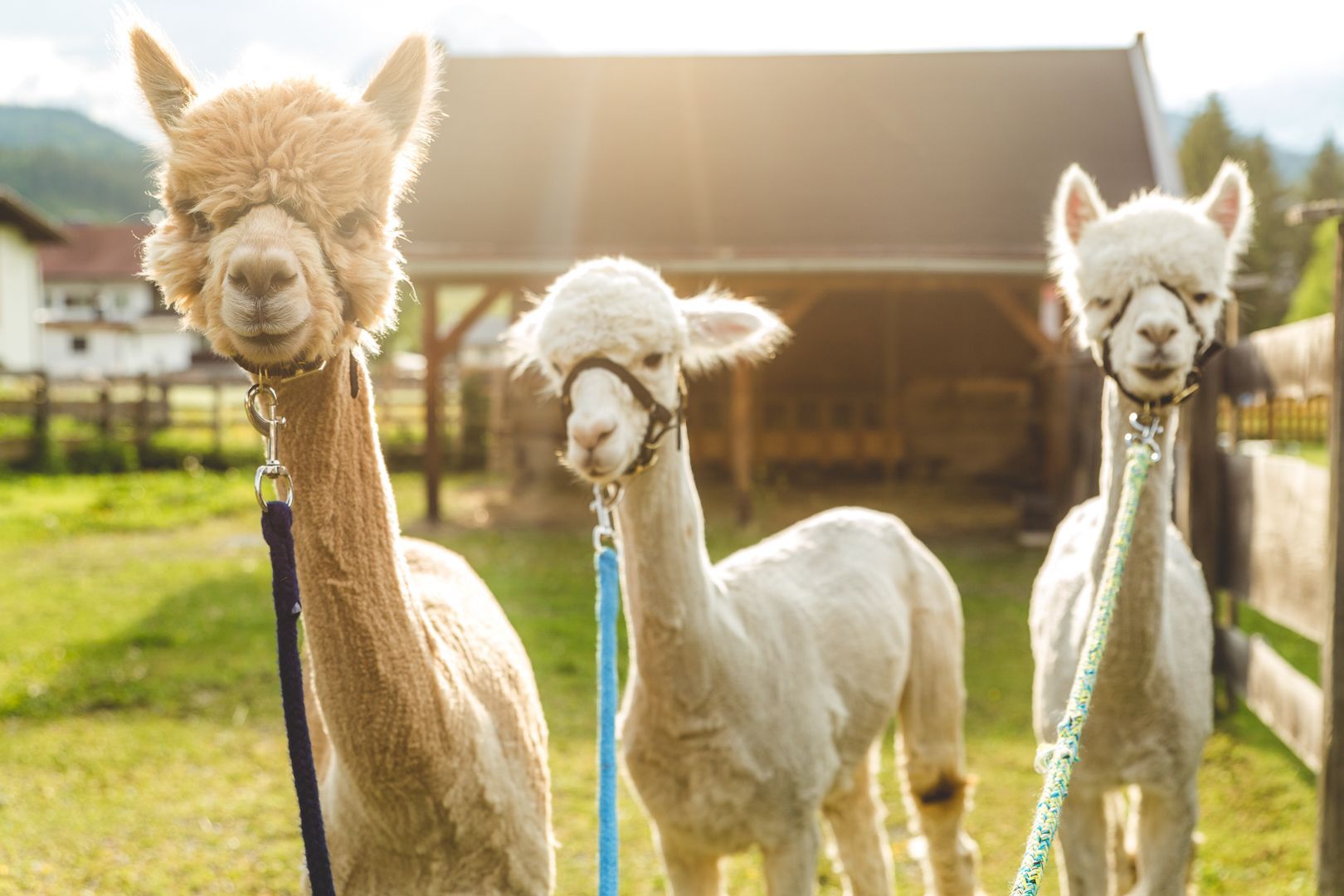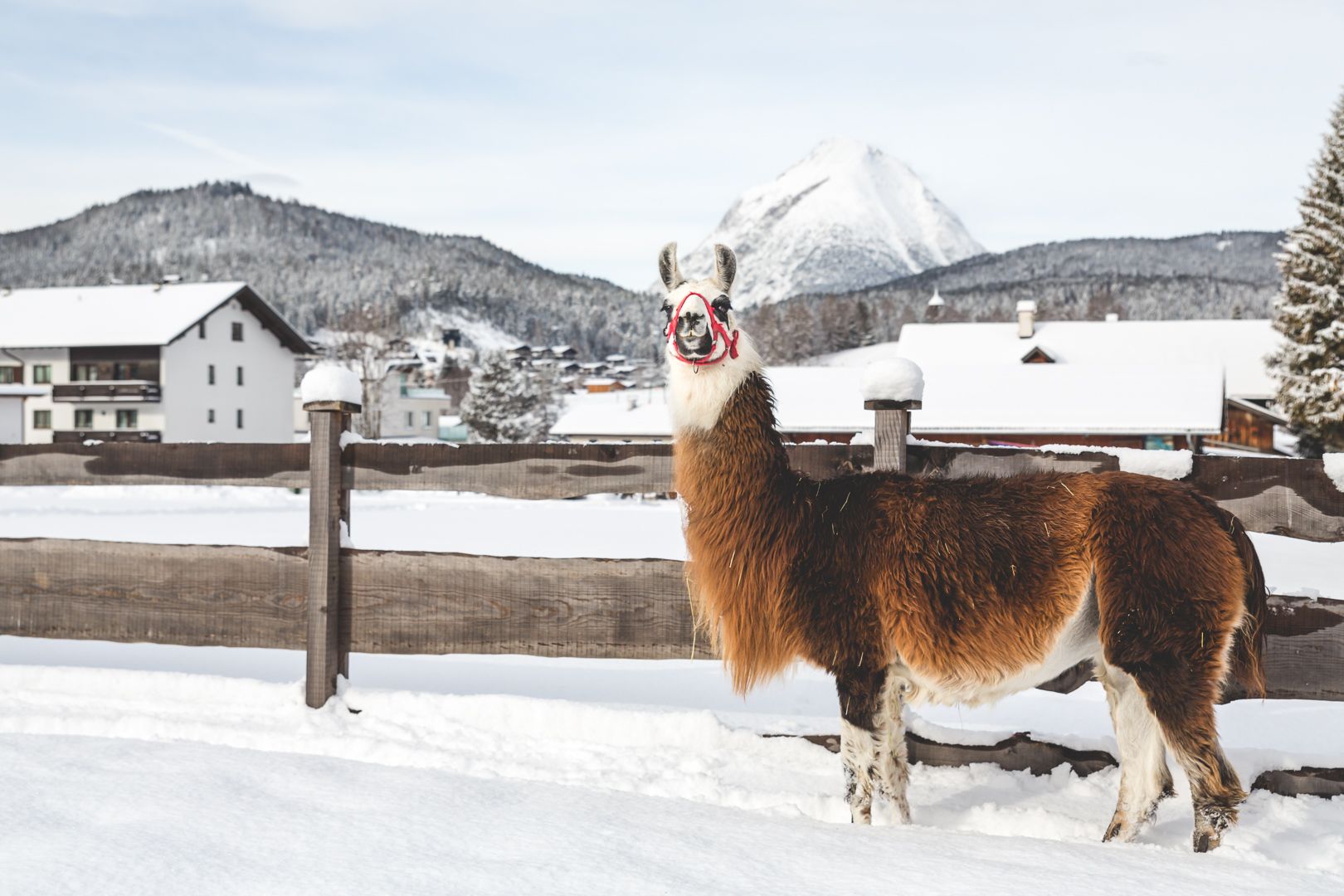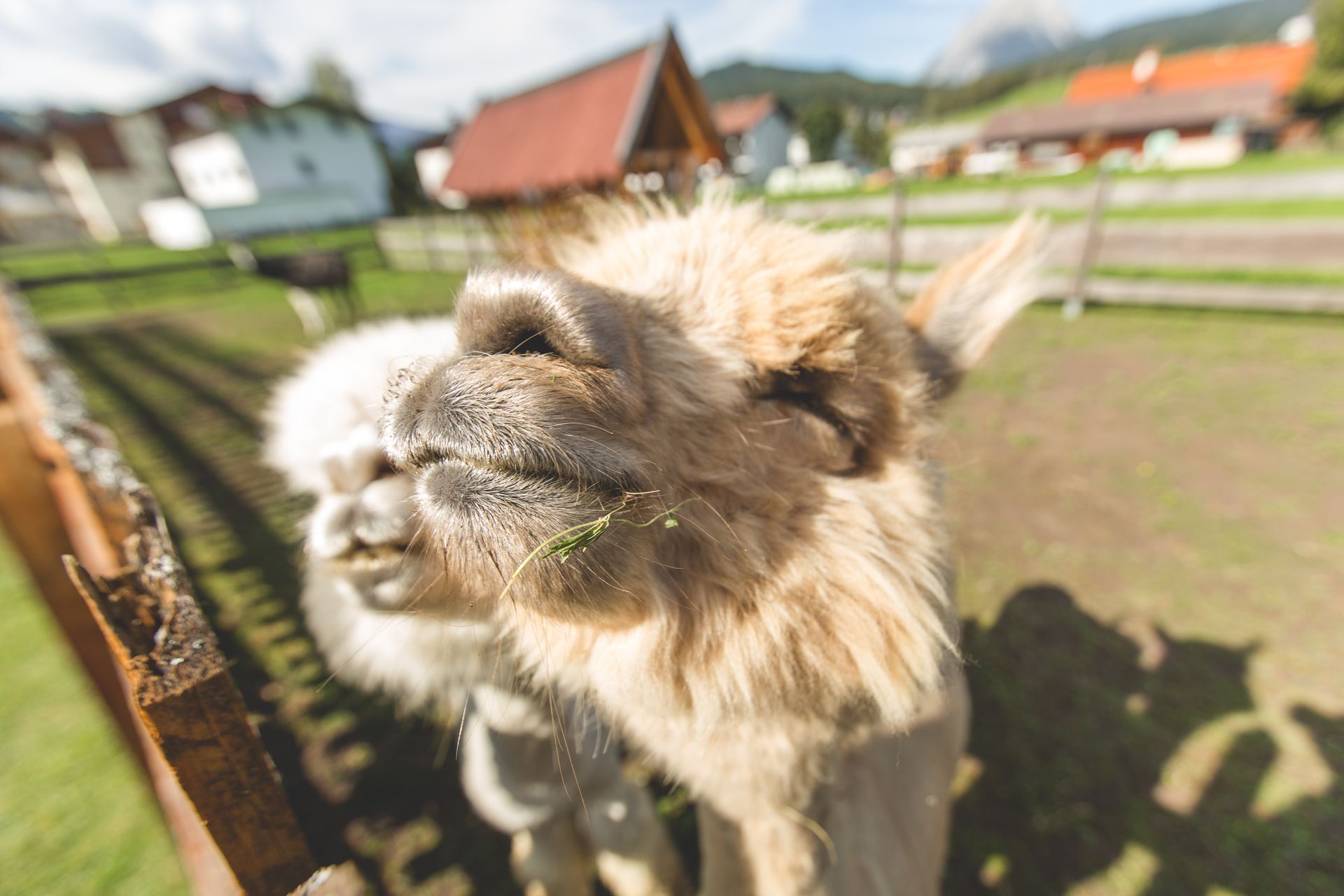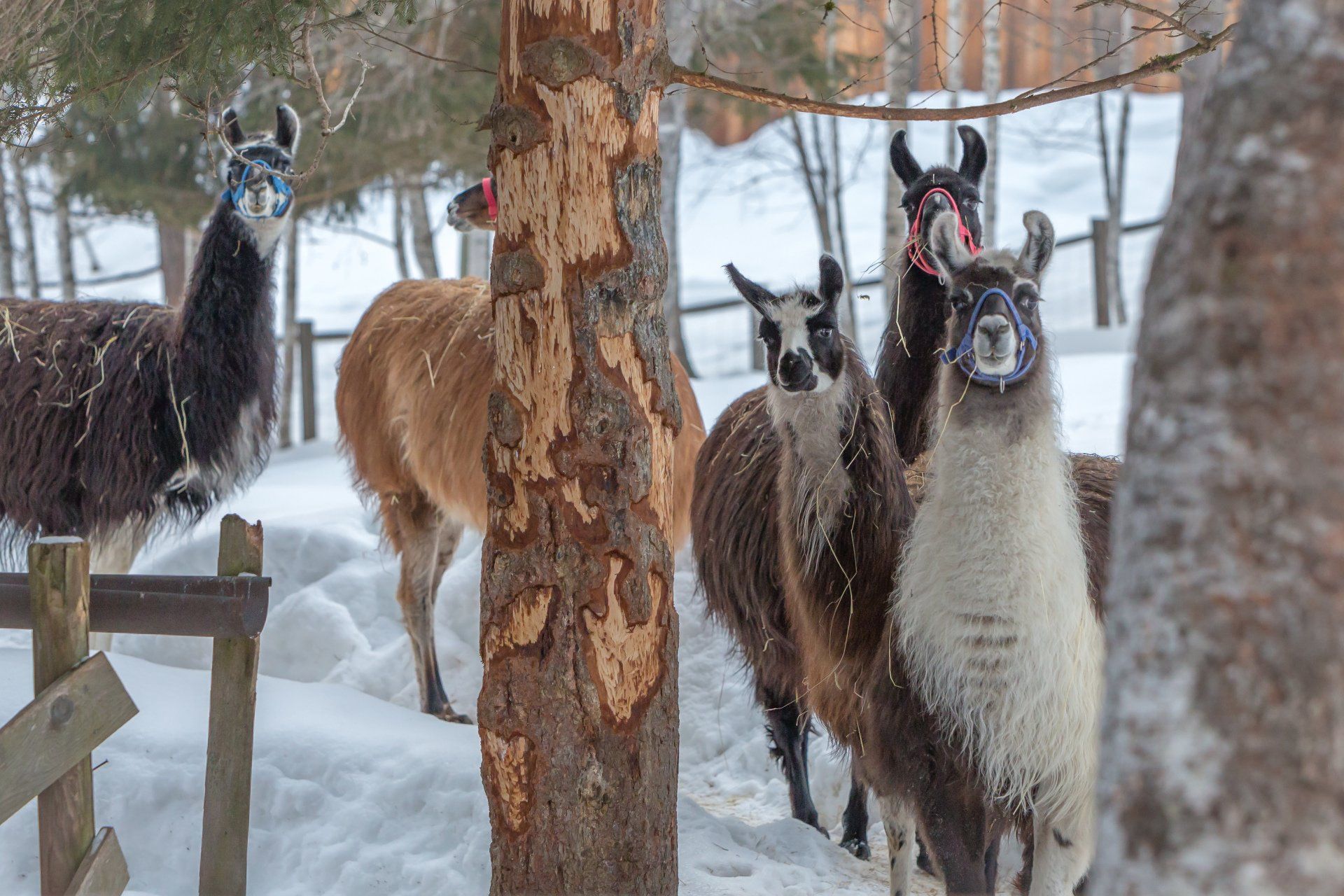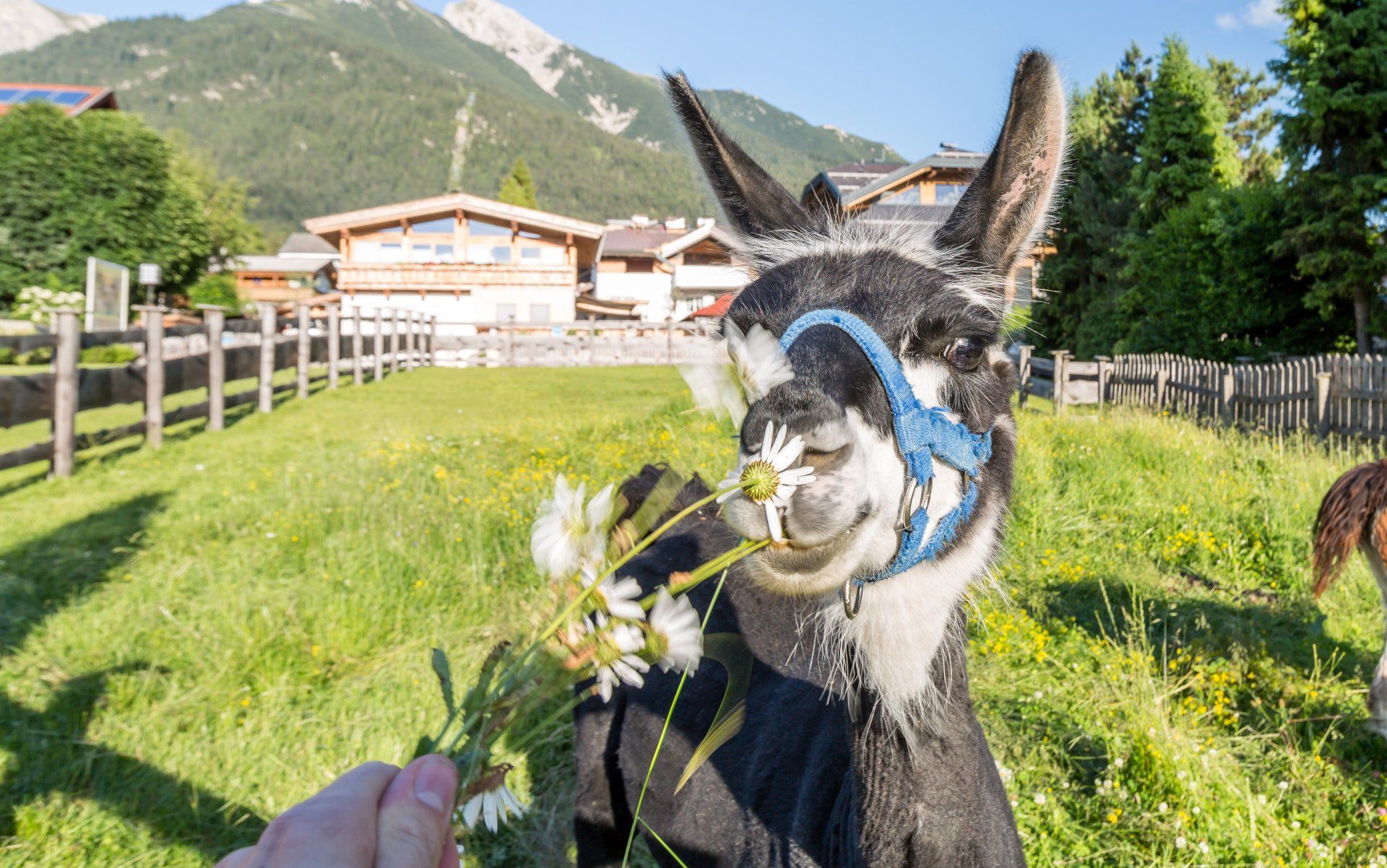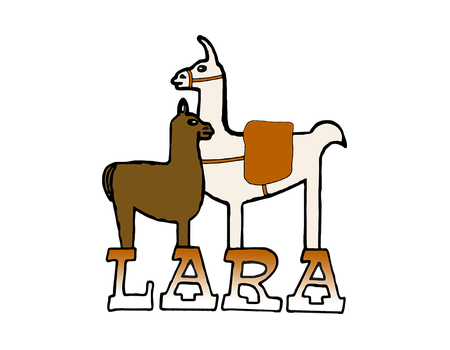Our Llamas and Alpacas
Ever hike with lamas?
If not, then you have the opportunity with us. The guests of our house can look forward to the weekly guided lama hikes in summer. The tours are guided by us personally and depend on the condition of the participants.
Where are the lamas?
We keep a few of our llamas directly opposite the hotel at the connection to the sunbathing lawn.
The other lamas are at the Geigenbühel, where they enjoy almost infinite freedom.
How it started...
Llamas and alpacas are becoming more and more popular, but with us they have been part of the family for a long time. Due to the closure of the Magdeburg Zoo in 1989 we got our first New World camels - 3 guanacos. The love for these animals was kindled by the ancestors of the llamas and so we expanded our herd in the years to come. Today our herd consists of 10 llamas and 3 alpacas, with whom we regularly go on walks.
And whatever else you want to know about llamas....
The guanaco is said to be the ancestor of the llama - at least that is what is believed, with domestication occurring as early as the third millennium BC. Nevertheless, there is also the view that the llamas represent a separate species, which is no longer found in the wild, or is extinct. The exact origins of the llamas can probably never be traced; especially because a mixture with alpacas, vicuñas and guanacos has already taken place.
The llamas were already used by all peoples of the Andean region - especially as a beast of burden and also as a supplier of wool. However, the wool of the alpaca was considered more valuable until today. Furthermore, the Indigenousof the Andes made the much used leather from the skin of the llamas, used the fat for candles and the excrements as fuel. Likewise, llamas were part of the diet of the Andean population.
Nowadays, llamas are still used in the Andes as beasts of burden, especially in the otherwise inaccessible regions of the Andes; also for their meat and, of course, for their wool. The population here is estimated at about 3 million.
Outside South America, for example, there are already more than 100,000 llamas in the USA, which are bred there and kept on farms. These are shorn and the wool is already used in many ways. Also in Europe there are already for some time appropriate breedings.
Some Lamahalter undertake with their Lamas migration routes, with which the Lamas carry the luggage as load animals - even up to 30 kilograms per animal. Meanwhile, such "llama tours" are very popular with all visitors and tourists.
Also worth mentioning is the "AAT Llama Therapy" (AAT from the American for "animal assisted therapy"), which is possible mainly due to the calm nature of these animals.
Whether llamas spit? That's probably the question on everyone's mind ...
In fact, llamas and alpacas can spit when they feel harassed. Their accuracy is astonishing, even if spitting rarely occurs with or against humans. The llamas spit among themselves to create a distance to a conspecific or to clarify the hierarchy. Saliva is spat only as a warning, in "more serious" cases even the half-digested stomach contents (albeit in small quantities) are spat.
We are looking forward to see you!
Accompany one of our llama and alpaca tours and let us inspire you with these enchanting animals. Anyone who has ever been in contact with these animals knows how quickly you can fall in love with these big googly eyes. Our tours are not only informative, but also lead through one of the most beautiful corners of Seefeld.
CONTACT
Appart- und Wellnesshotel Charlotte
Haspingerstrasse 475
MENU
Appart- und Wellnesshotel Charlotte
Haspingerstrasse 475
6100 Seefeld in Tirol
Tel: +43 (0)5212 2652
Fax: +43 (0)5212 26526
Email: info@hotel-charlotte.com
SUBSCRIBE NEWSLETTER
Wir setzen uns so schnell wie möglich mit Ihnen in Verbindung.
Bitte versuchen Sie es später noch einmal.




